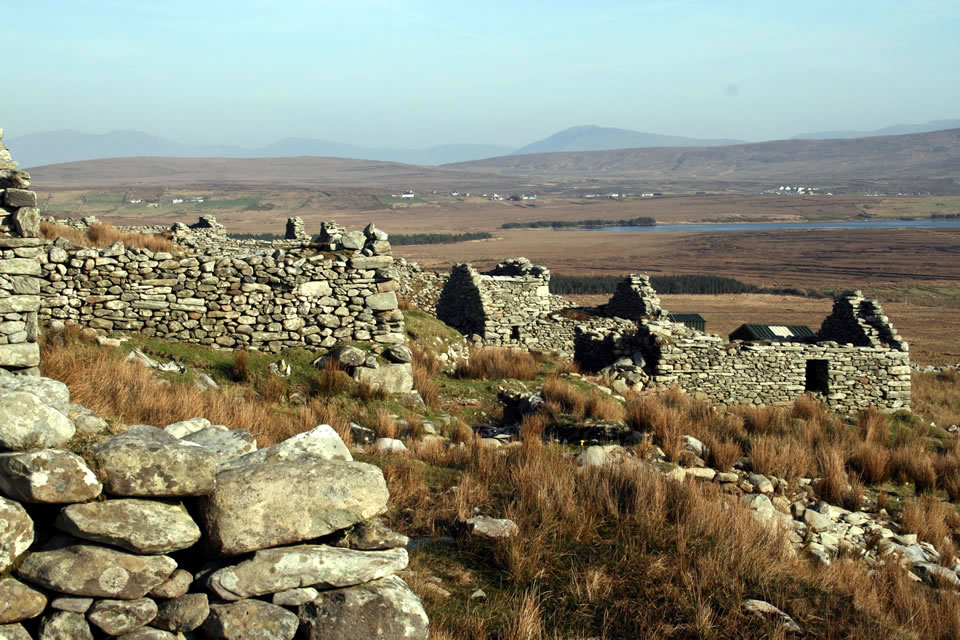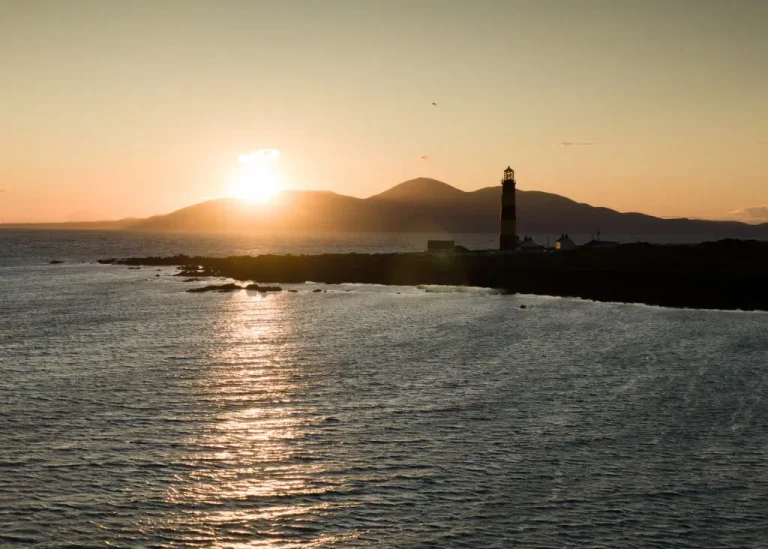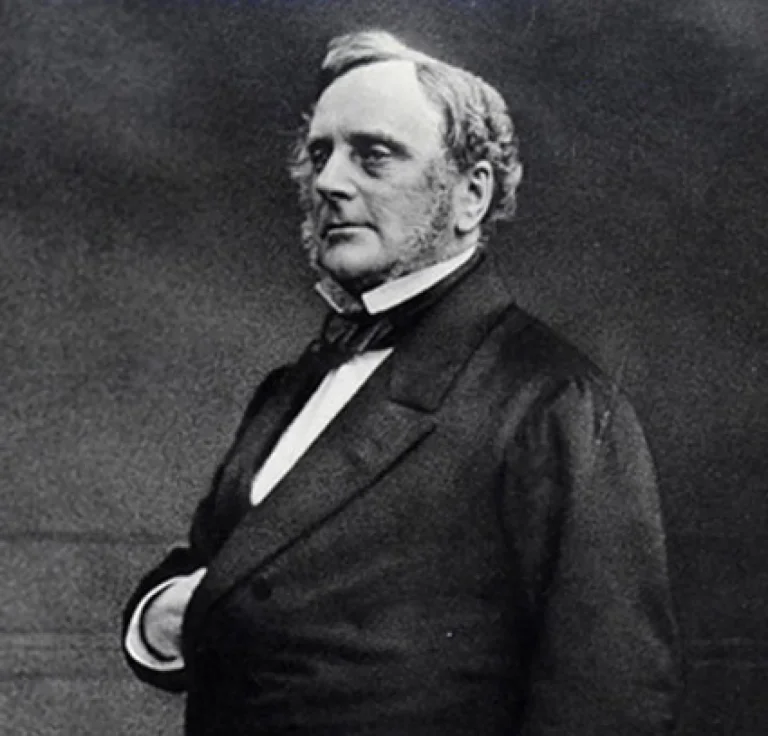

Tucked into the shadow of Slievemore Mountain, above the lapping waters of the Atlantic and under skies that can shift from mist to fire in a blink, lies one of Ireland’s most mysterious and moving historical sites — the Deserted Village of Achill.
Eighty or more roofless stone cottages stretch in an eerie line across the slopes. There are no fences, no modern roads, no commercial plaques. Just wind, stone, and silence. But look closer, and you’ll begin to see something else: the living memory of a people. A trace of Ireland’s soul in every moss-draped wall.
The Deserted Village Achill is more than a ruin. It’s a monument to survival, heartbreak, resilience — and mystery. And it’s one of the most hauntingly beautiful places in all of County Mayo.
A Forgotten Village with a Story to Tell
Known in Irish as Baile na Seilge, the Deserted Village was once a seasonal booley settlement — where families moved in summer to graze cattle and grow potatoes on higher land. But over time, especially during the years of the Great Famine and the harsh 19th-century land evictions, these cottages became permanent homes… and later, permanent memories.
Wander here, and you’re walking among the ghosts of entire generations. The stillness is sacred. The stones — and there are thousands of them — hold the echo of children’s laughter, of fires lit, of lives lived and lost.
Deserted Village Achill Map and How to Get There
Location: Slievemore Mountain, near Dugort, Achill Island, County Mayo, Ireland.
Access: Free and open year-round.
Coordinates: 53.9811° N, 10.0886° W
To explore the Deserted Village Achill map, park at Dugort (there’s a dedicated car park near the base of Slievemore) and follow the marked trail up the slopes. The site is not difficult to find — it’s visible from the main road, and the trail is easy to follow, though rugged in places.
For hikers, the Deserted Village Walk Achill connects with the Slievemore Heritage Trail, which allows you to climb higher if you choose, offering sweeping views of the coastline.
Deserted Village Achill History: A Mirror of Ireland
The story of this place is inextricably linked with the broader history of Achill Island and Ireland itself. The cottages date back at least to the 19th century — but some evidence suggests the site may have been used in the Bronze Age.
During the 1840s, the Achill Famine hit this part of Ireland hard. Crop failures, hunger, and mass emigration led to abandonment. Later, changing economic models, land ownership reforms, and the decline of transhumance (seasonal herding) finished the process.
Today, the Slievemore Deserted Village Reviews often use one word repeatedly: powerful.
“You don’t need a guide to feel it. The place speaks.”
– TripAdvisor review, 2024
The Slievemore Heritage Trail
If you want more than a casual wander, follow the Slievemore Heritage Trail — an official looped path that leads you through the cottages and higher up the mountain. You’ll pass ancient field systems, lazy beds, standing stones, and burial sites.
Wear hiking shoes. Bring water. Pause often. There’s history here — but there’s also peace.
Nearby Attractions: Make It a Day on Achill
The Deserted Village is just one chapter in Achill’s wild story. From here, you’re just minutes away from these must-sees:
-
🌊 Keem Beach – One of the most beautiful beaches in the world.
-
🦈 Basking Sharks in Achill – Visit in late spring for a chance to see these gentle giants near the shore.
-
🎣 Fishing, surfing, and sea-kayaking tours.
-
🥾 Hikes to Croaghaun Cliffs and Minaun Heights.
FAQs About the Deserted Village and Achill Island
Why was Slievemore abandoned?
The village was originally used seasonally, but was permanently settled during the 1800s. It was gradually abandoned due to famine, economic hardship, and land evictions. Changes in farming practices also made the site less viable over time.
Was there a famine in Achill Island?
Yes. Like much of the west of Ireland, Achill suffered greatly during the Great Famine (1845–1849). Starvation and mass emigration devastated the population.
Where is the deserted village?
It’s located on the southern slopes of Slievemore Mountain, just above the village of Dugort, on Achill Island in County Mayo. Look for the Deserted Village Achill map signs at the car park.
What is the largest village on Achill Island?
The largest settlement is Achill Sound, located at the bridge entrance to the island. It serves as the main hub with shops, services, and accommodation.
Can you climb Slievemore?
Yes. Slievemore stands at 671 meters (2,201 ft), and while not a technical climb, it is steep and weather-exposed. Allow 3–4 hours for a full ascent and descent. The views are stunning.
How high is Slievemore, Achill?
Slievemore is the second-highest mountain on Achill Island at 671 meters, offering incredible views over the Atlantic and back toward the Deserted Village.
Final Thoughts: Ireland’s Soul in Stone
There are places in Ireland that dazzle — and places that hum. The Deserted Village of Achill hums.
It doesn’t shout. It doesn’t show off. But it stays with you.
The empty cottages. The shifting light on stone. The echo of children who once ran barefoot down these grassy lanes. You come to the Deserted Village Achill looking for history — and leave having touched something older, deeper, and strangely comforting.
If you’re visiting the west of Ireland and looking for things to do in Achill, don’t miss this.
And if you want to continue your journey through Ireland’s wild heart, check out:
🔗 Keem Beach – Ireland’s Emerald Bay of Adventure, Relaxation, and Wild Beauty
🔗 Discovering Basking Sharks off Achill Island – A Deep Dive Into Ireland’s Gentle Giants



